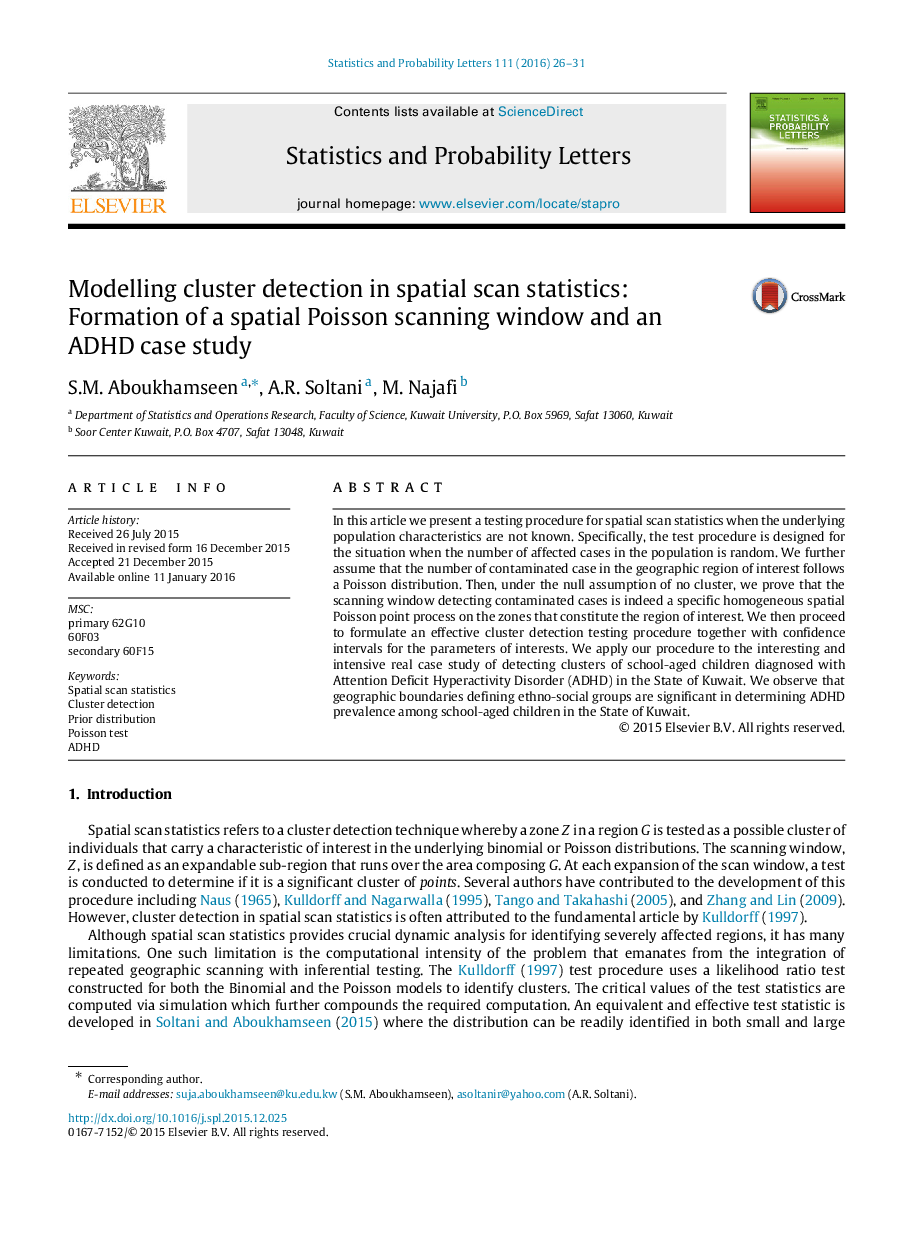| Article ID | Journal | Published Year | Pages | File Type |
|---|---|---|---|---|
| 7549024 | Statistics & Probability Letters | 2016 | 6 Pages |
Abstract
In this article we present a testing procedure for spatial scan statistics when the underlying population characteristics are not known. Specifically, the test procedure is designed for the situation when the number of affected cases in the population is random. We further assume that the number of contaminated case in the geographic region of interest follows a Poisson distribution. Then, under the null assumption of no cluster, we prove that the scanning window detecting contaminated cases is indeed a specific homogeneous spatial Poisson point process on the zones that constitute the region of interest. We then proceed to formulate an effective cluster detection testing procedure together with confidence intervals for the parameters of interests. We apply our procedure to the interesting and intensive real case study of detecting clusters of school-aged children diagnosed with Attention Deficit Hyperactivity Disorder (ADHD) in the State of Kuwait. We observe that geographic boundaries defining ethno-social groups are significant in determining ADHD prevalence among school-aged children in the State of Kuwait.
Related Topics
Physical Sciences and Engineering
Mathematics
Statistics and Probability
Authors
S.M. Aboukhamseen, A.R. Soltani, M. Najafi,
